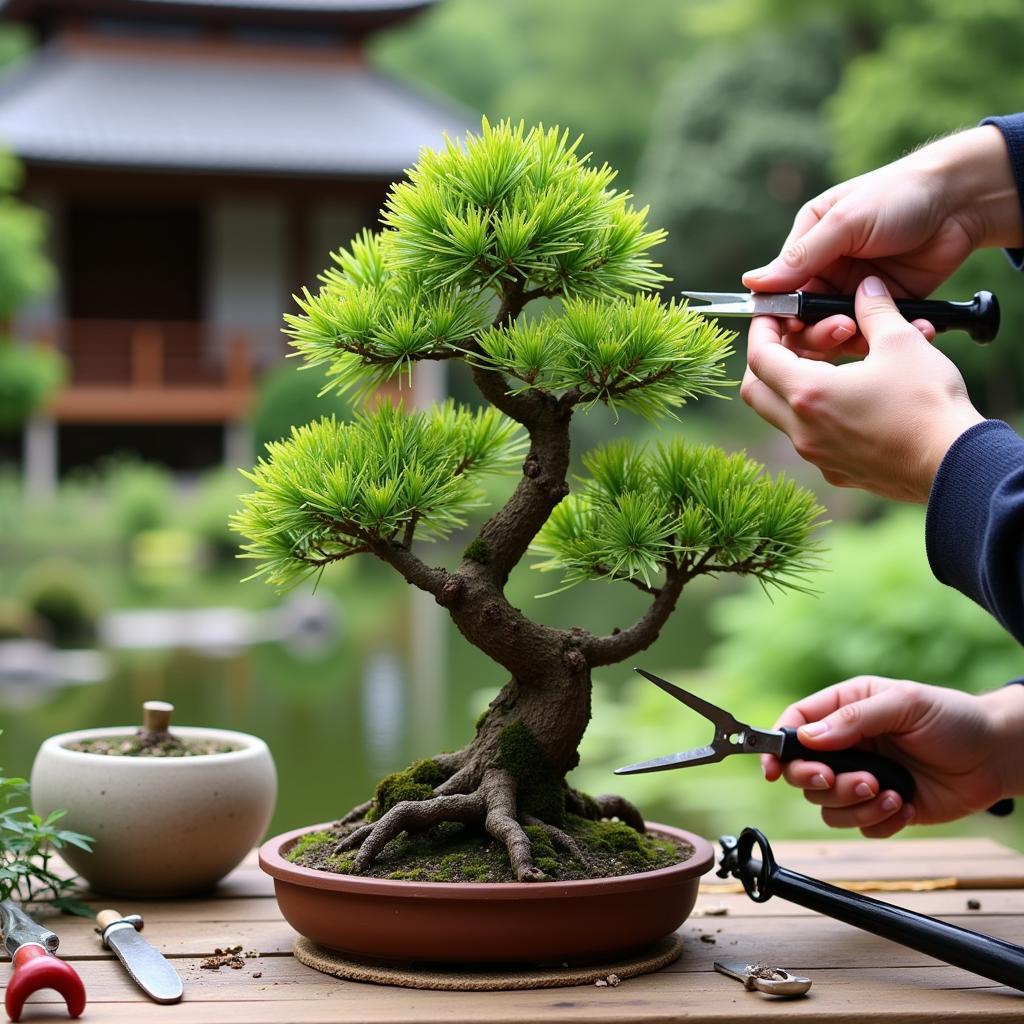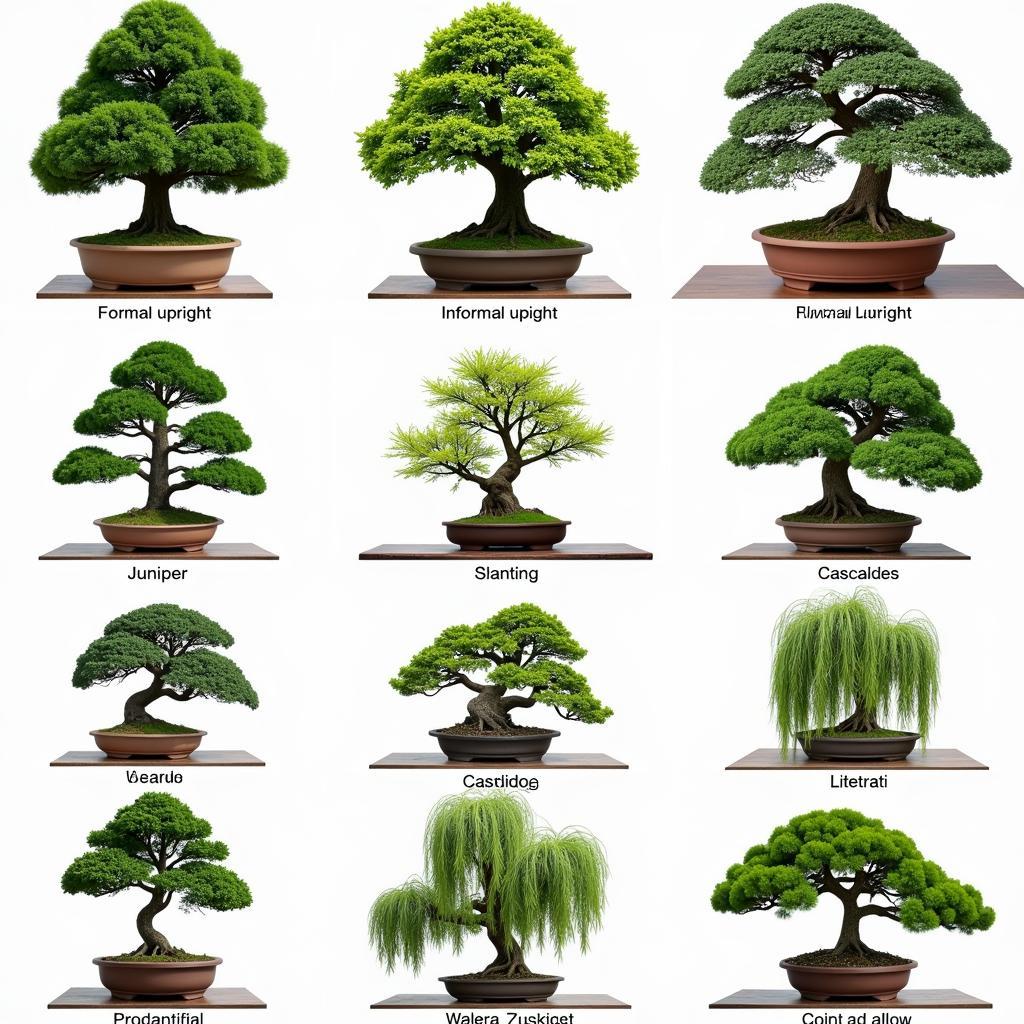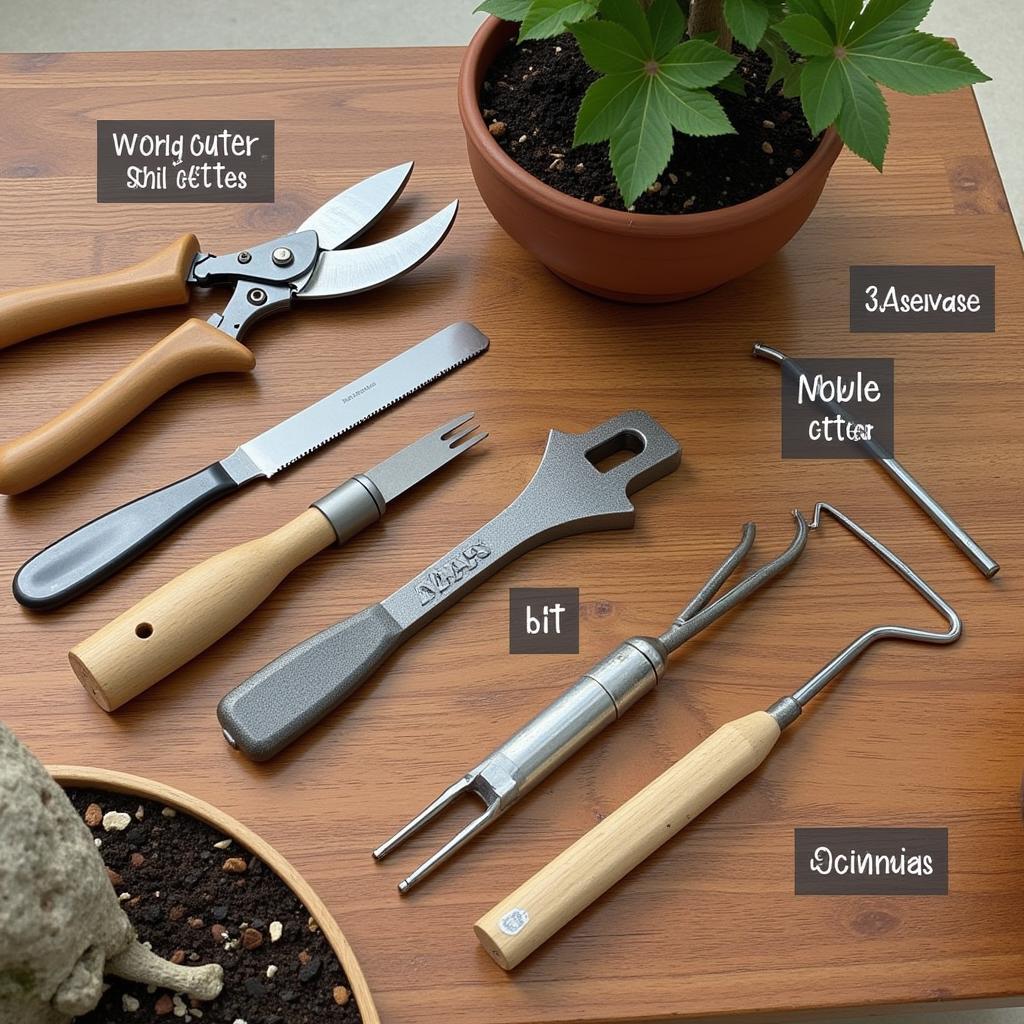Bonsai tree styling is an art form that involves shaping and training miniature trees to create aesthetically pleasing and evocative representations of nature. This guide will provide valuable insights and techniques for creating stunning bonsai, from understanding basic principles to advanced shaping techniques.
 Basic Bonsai Tree Styling Techniques
Basic Bonsai Tree Styling Techniques
Understanding Bonsai Styles
Bonsai styling follows specific aesthetic principles, often inspired by natural tree forms. These styles, such as formal upright, informal upright, slanting, cascade, and literati, dictate the overall shape and direction of the tree. Choosing a style that suits the tree’s species and your artistic vision is the first step in bonsai creation. Understanding these fundamental styles is essential for creating a harmonious and balanced bonsai.
Choosing the Right Style
Selecting the appropriate style depends on the natural growth habit of the tree species. For instance, a naturally upright tree like a juniper lends itself well to formal and informal upright styles. A weeping willow, with its cascading branches, would be more suited to a cascade or semi-cascade style.
 Choosing the Right Bonsai Style for Different Tree Species
Choosing the Right Bonsai Style for Different Tree Species
Essential Bonsai Styling Techniques
Several techniques are employed to shape and maintain a bonsai. Pruning, wiring, and repotting are among the most crucial.
Pruning: Shaping the Silhouette
Pruning removes unwanted branches and foliage, shaping the bonsai’s silhouette and promoting ramification – the development of finer branches. It’s essential to understand the different types of pruning cuts and their impact on the tree’s growth.
Wiring: Guiding Branches
Wiring involves carefully wrapping copper or aluminum wire around branches to bend and position them, creating the desired shape. This technique allows for precise control over the bonsai’s form and can be used to create dramatic curves and angles.
Repotting: Maintaining Health and Shape
Repotting, done every few years, helps refresh the soil, prune the roots, and maintain the bonsai’s size and health. It’s a crucial step in ensuring the long-term vitality and aesthetic appeal of the bonsai.
Advanced Styling Techniques
As you gain experience, you can explore more advanced techniques like grafting, deadwood creation (jin and shari), and leaf trimming to refine your bonsai’s artistry. These techniques add a level of complexity and realism, bringing your bonsai closer to a miniature representation of a mature tree in nature.
“Patience and observation are key to mastering bonsai,” says renowned bonsai artist, Hiroki Nakamura. “It’s a continuous journey of learning and refinement.”
Tools for Bonsai Styling
Having the right tools is essential for effective bonsai styling. These include specialized pruning shears, concave cutters, wire cutters, and root hooks. Investing in quality tools will make the styling process easier and more precise. hướng dẫn làm nơ bằng ruy băng vải offers some interesting insights into precision work with different materials, which can be applied in a similar way to bonsai shaping.
 Essential Tools for Bonsai Styling
Essential Tools for Bonsai Styling
“Understanding the tools and their purpose is fundamental to bonsai styling,” adds Mei Lin, a respected bonsai instructor. “Each tool has a specific function, allowing for precise manipulation of the tree’s structure.”
Conclusion
Bonsai tree styling is a rewarding art form that combines horticultural knowledge with artistic expression. By understanding the different styles, techniques, and tools involved, you can create beautiful and evocative miniature landscapes that bring the beauty of nature into your home. With patience and practice, your bonsai tree styling journey will lead you to create stunning living art.
FAQ
- How often should I water my bonsai?
- What type of soil is best for bonsai?
- How much sunlight does a bonsai need?
- When is the best time to prune my bonsai?
- How do I choose the right bonsai pot?
- How do I protect my bonsai from pests and diseases?
- What are the common mistakes to avoid in bonsai styling?
Need help with your Hanoi travel plans while exploring the art of bonsai? Contact TRAVELCAR at 0372960696, TRAVELCAR[email protected] or visit us at 260 Cầu Giấy, Hà Nội. We offer 16-seater, 29-seater, and 45-seater vehicle rentals for airport transfers, sightseeing tours, and point-to-point travel, available 24/7.
Would you like to learn more about hướng dẫn làm nơ bằng ruy băng vải?

